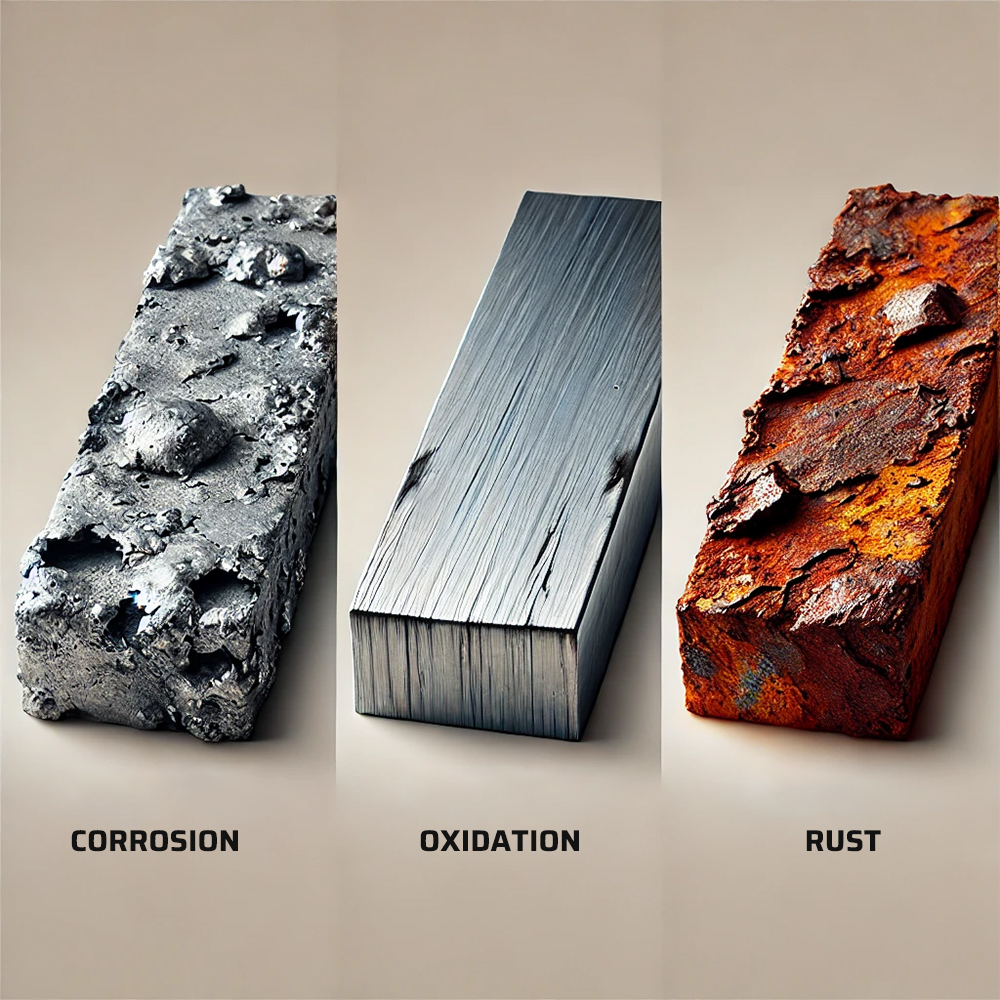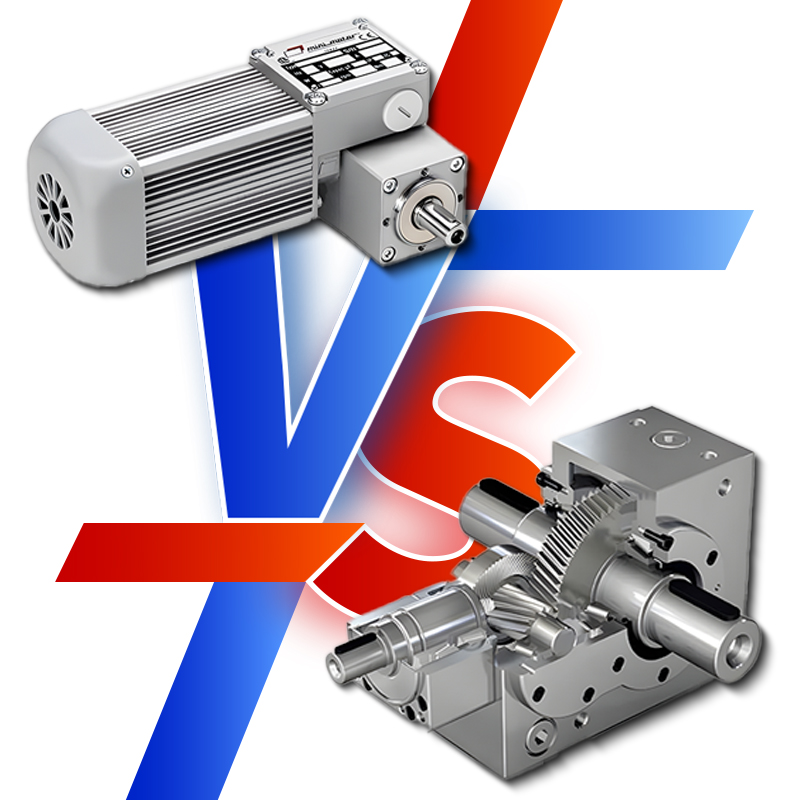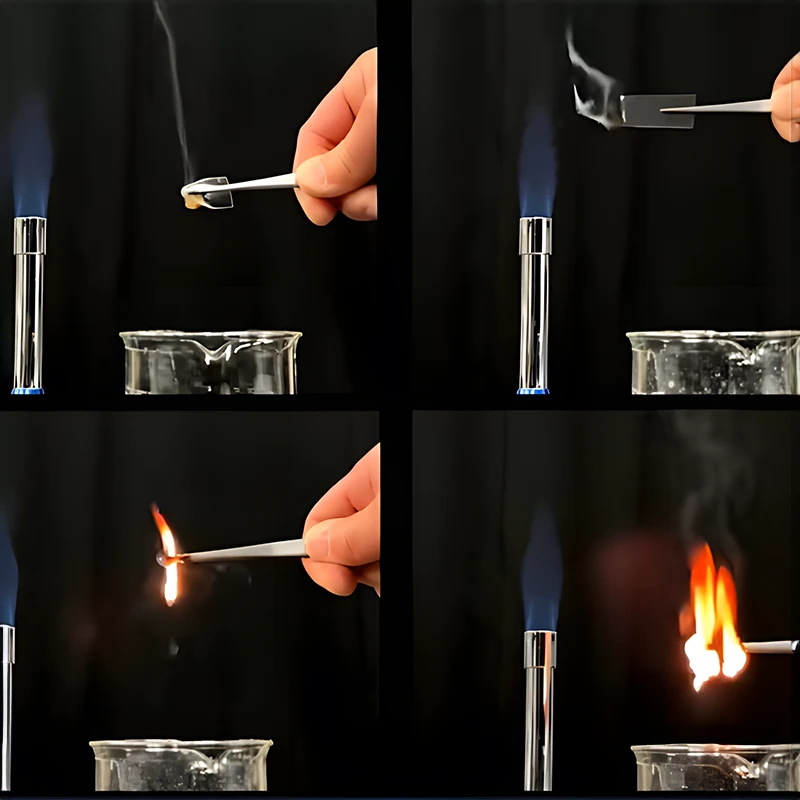Different materials have different roles in the engineering sector and thus require property processes to meet the necessary needs. Engineers apply different techniques to acquire the necessary properties during the manufacturing process. One of the widely applicable processes is heat treatment.
The role of heat treatment in engineering manufacturing is to change the mechanical and chemical properties of the part before introducing it to the processing or part assembly. Through this process, the resulting component becomes more useful and serviceable and is safe for use in the workshop.
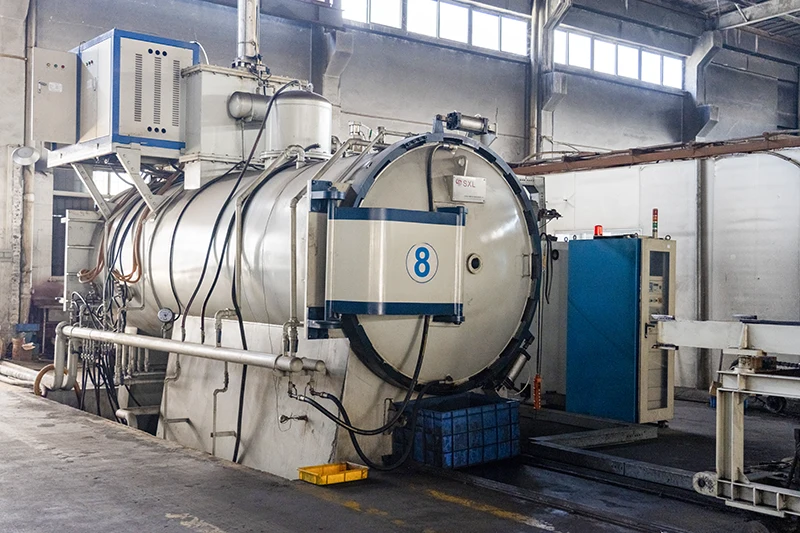
Heat treatment in manufacturing engineering and material science is heating a material to a certain temperature, keeping the material at that temperature for some time, and then cooling the material in a certain pattern. It changes materials’ microstructure, achieving mechanical properties like resistance to wear, toughness, and hardness.
Heat treatment applies not only to metals but is also necessary for manufacturing die or plastic molds. For instance, it ensures that the molds used in die casting are constantly dimensionally stable, resisting deformation and cracking.
Manufacturing, aerospace, construction, and automotive industries are some of the sectors that constantly use heat treatment to improve their products. They usually heat-treat metals through annealing, quenching, and tempering techniques.
Heat Treatment Processes for Metals
Metals’ three heat treatment processes include annealing, quenching, and tempering.
ANNEALING
Annealing is an applicable heat treatment process that aims to restore a component to its physical state. Ductility is very important in manufacturing different engineering components like metal plates, guaranteeing easier rolling into thinner sheets. However, sometimes, such metals become hard. In some cases, during machining and cold working of the metal shafts or during casting, the materials accumulate internal stresses, which can result in their brittleness. The role of annealing is to lower the hardness levels and relieve possible stresses in such materials.
During annealing, technicians raise the temperature of the metal just above the recrystallization temperature. However, the annealing temperature should be below the melting temperature of the materials. The high temperatures provide sufficient energy for the migration of atoms within the metal microstructure.
The high energy also leads to the formation of more grains. The process results in the dislocation rectification. Further, the processes relieve the internal stresses of the metal. Upon cooling, the metal restores its ductility effectively for easy machineability.
Steps of the Annealing Process
1. Calefacción: Heating of the metal occurs at recrystallization temperatures, which vary based on the metal type. For instance, the recrystallization temperature for steel is 500-7000C. This heating leads to a uniform temperature in the materials, leading to microstructure rearrangement.
2. Soaking/Holding Time: Once the metal reaches the recrystallization temperature, technicians hold it at that temperature for some time, called soaking time. At this time, recrystallization occurs, leading to new grains in the metal’s microstructure. Consequently, the process leads to metal softening. The material composition and thickness determine the soaking time. The durations can be as short as a few minutes but several hours.
3. Refrigeración: The metal cooling soaking period. Technicians ensure that cooling is slow in the controlled environment, either in the air or the furnace. Through slow cooling, technicians prevent the formation of stresses and undesirable phases in the metal microstructure. Quick cooling of the material can harden the metal.
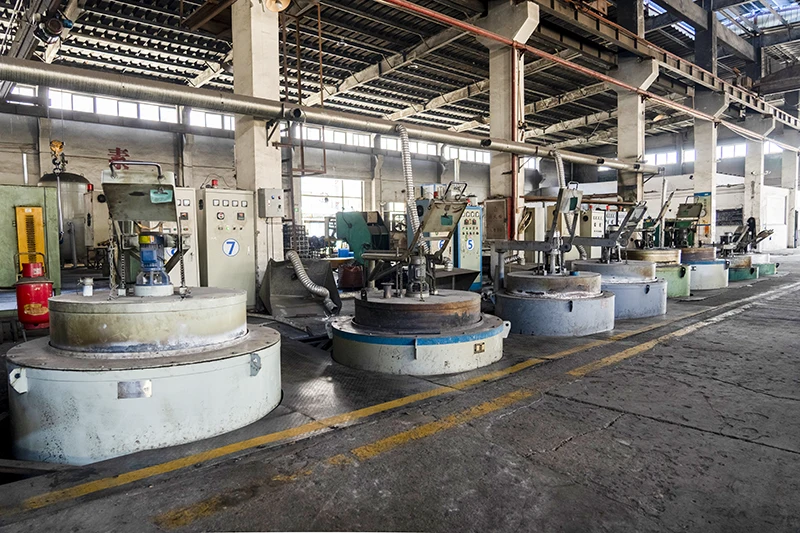
Common Metals
| Metal | Recrystallization Temperature (°C) | Ductility | Hardness (after annealing) | Resistencia a la tracción (MPa) |
| Low Carbon Steel (e.g., AISI 1018) | 450 – 700 | High (improves significantly after annealing) | Low (Soft after annealing) | 370 – 440 |
| Medium Carbon Steel (e.g., AISI 1045) | 700 – 750 | Moderate to high (increases after annealing) | Moderate (tougher than low carbon) | 565 – 620 |
| High Carbon Steel (e.g., AISI 1095) | 700 – 750 | Low to moderate (improved, but still lower than low-carbon Steel) | High (harder but more brittle) | High (harder but more brittle) |
| Aluminio (e.g., 6061 alloy) | 250 – 400 | Very high (significant improvement post-annealing) | Very low (softens substantially) | 110 – 270 |
| Cobre (e.g., pure copper) | 200 – 400 | High (improves with annealing) | Low (soft and malleable) | 210 – 230 |
| Latón (e.g., 70-30 alloy) | 300 – 500 | High (ductile and formable) | Low to moderate (soft after annealing) | 280 – 320 |
| Acero inoxidable (e.g., 304) | 450 – 600 | Moderate (ductility improved, but lower than carbon steel) | Moderate to high (depends on grade) | 515 – 720 |
QUENCHING
Unlike annealing, which aims to remove metal hardness, quenching seeks to achieve metal hardness and strength. In quenching, technicians heat metal to a certain temperature and rapidly cool the metal to room temperature or below. The rapid cooling process leads to structural and atomic realignment in the metal structure. This transformation is martensitic transformation, and the resulting material is hard.
Engineers can achieve quenching through water, oil, air, and specialized fluids. The method to use depends on the outcomes of the metal under quenching.

Steps of the Metal Quenching Process
1. Metal Preparation: Based on the material properties, technicians select the type of metal for quenching. The metal is then cleaned to remove dirt or debris, which can interfere with the quenching process.
2. Metal heating: Metal is heated to critical temperatures in a heat-treated oven. At critical temperatures, metals become non-magnetic. The heating is uniform to ensure that the resulting hardness is uniform.
3. Quenching media selection: There is a wide range of quenching media. The selection of certain media depends on the materials and the purpose of the resulting products. For example, technicians select water as the quenching medium if the material is carbon steel.
4. Metal quenching: Carefully lower the hot metal to the quenching medium. Technicians use quench tanks for uniformity, and the full metal immersion leads to uniform cooling.
5. Cooling Rate Control: The cooling rate significantly affects the properties of the final product. Use faster cooling rates to achieve increased hardness, while slower cooling rates lead to softer materials.
Cooling Media Selections
Different quenching media have different applications in the quenching process. For instance, using water can lead to a very fast cooling rate. With its high cooling capacity, water achieves hardness in the shortest time possible. In most cases, engineers use water quenching to form martensitic steel. However, the high cooling rates can sometimes warp and crack. Water quenching applications include carbon and alloy steels that require high hardness for cutting tools.
Oil quenching is applicable for moderate cooling rates. The metals cool moderately slowly when oil quenches to avoid warping and cracking. Engineers use oil quenching to achieve a balance between hardness and toughness. However, oil quenching is risky since it is flammable. Further, oils are messy to handle. The resulting product may lack maximum hardness.
Air quenching is essential for a slow cooling rate. The gradual cooling rate is vital for alloys that can distort and crack from faster cooling. However, air quenching may not lead to maximum hardness.
TEMPERING
Tempering usually follows quenching to lower the metal’s brittleness and restore its ductility. During tempering, technicians re-heat the metal from the quenching process to certain levels and keep it below the critical point (usually 150-700C) for some time. Cooling then follows in still air to room temperature.
Steps
1. Heating: Heat the metal to a tempering temperature, which is between room temperature and critical temperatures. Control the heating rate. Too quick heating can lead to cracking. Different metals have different tempering temperatures. Heating helps release stress from the quenching process while keeping the hardness.
2. Holding time: Keep the metal at the tempering temperature. Holding time ranges from 30 minutes to hours, depending on the resulting product’s use and the materials’ thickness. This holding time leads to softening, lowering brittle levels while keeping the materials’ hardness.
3. Cooling: After holding time, cool the metal with air. Air guarantees a slow cooling rate, which helps avoid new stresses forming.
Heat Treatment Methods for Plastic and Die-Casting Molds
The durability and performance of casting molds depend on the selection of the materials. Mold engineers are responsible for selecting materials considering functions and structure. To meet the right functions and structure, casting mold materials undergo heat treatment and surface reinforcement to guarantee durability and quality.
Heat treatment of die-casting molds involves four key steps.
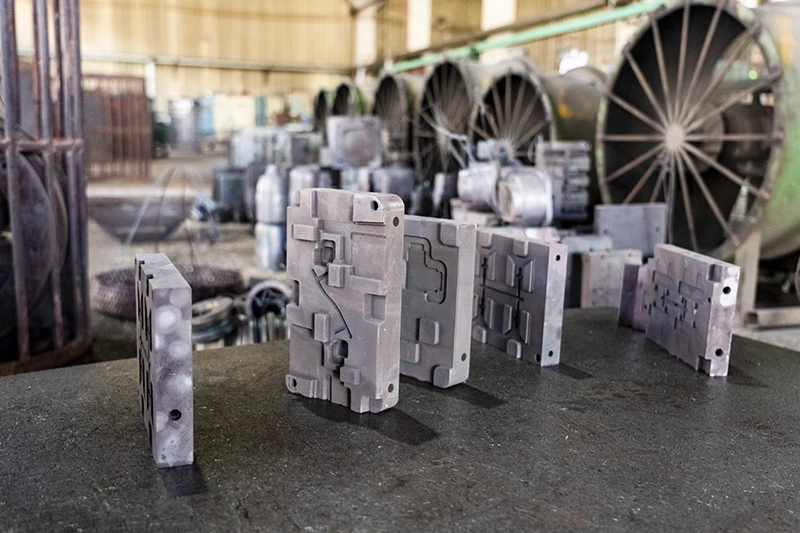
Preheating and Post heating
This step is essential in heat treatment as it helps mold resist thermal shocks. During operations, die-casting molds experience thermal shocks from rapid changes that can result in cracking and deformation. During preheating, mold engineers heat the molds to operating temperatures before molding begins. This process prevents premature failure. Preheating also extends the mold’s life and ensures dimensional stability during molding operations.
After the molding process, mold engineers undergo post-heating in controlled cooling conditions. The process reduces the formation of internal stresses that can lead to warping.
Aliviar el estrés
This process is critical in die-casting molds. It is similar to annealing in metals, but it occurs at relatively lower temperatures in this case. Also, in die-casting molds, stress relieving aims to relax built-up stress rather than soften the mold materials.
Nitriding for Mold Hardness
This process helps to harden the mold steel’s surface without affecting the mold materials’ internal surface. Nitriding leads to improved wear resistance and increases the mold’s life span.
Nitriding involves heating the mold in a nitrogen-rich environment. In this process, nitrogen diffuses to the steel surface to create a hard nitride surface.
The process goal is akin to quenching. However, the temperatures for nitriding are 500-550C, relatively lower than quenching temperature. While quenching takes slow time, nitriding requires a relatively longer time, several hours.
However, the resulting nitride layer is excellent and does not require post-treatment.
Vacuum Heat Treatment
This process occurs in a vacuum to avoid oxidation and mold surface contamination. Oxidation can lead to poor surface finish and weaken the mold. Vacuum heat treatment is similar to other metal heat treatments, including annealing. The difference is that it occurs in a vacuum. It is expensive but useful in precision molds in medical devices and aerospace sectors.
Comparison between Metal Heat Treatment and Mold Heat Treatment
| Aspecto | Metal Heat Treatment | Mold Heat Treatment |
| Primary Objective | Improve mechanical properties (strength, hardness) | Enhance durability y dimensional stability |
| Key Processes | Quenching, tempering, annealing | Nitriding, stress relieving, vacuum heat treatment |
| Thermal Expansion | Significant, especially during quenching | Managed carefully to avoid distortion; gradual heating/cooling |
| Cooling Rates | Rapid cooling (quenching in water/oil) | Controlled cooling to reduce stress (post-heating) |
| Materials Handled | Steel, aluminum, copper, titanium | Tool steels (e.g., H13, P20) |
| Dureza de la superficie | Increased through processes like quenching | Improved via nitriding o vacuum heat treatment |
| Internal Stresses | Relieved via tempering after quenching | Relieved via stress relieving to prevent warping or cracking |
| Thermal Cycling Resistance | Metals are less exposed to frequent thermal cycling | Mold steels must withstand repeated heating and cooling cycles |
| Precisión dimensional | It is not always critical, depending on the application | Critical for precision molds; affected by thermal expansion |
| Oxidation Considerations | May require protective atmospheres during treatment | Minimized through vacuum heat treatment for high-quality molds |
| Product Quality Impact | Affects strength, wear resistance, and lifespan | Affects mold life, surface finish, and product quality |
Conclusión
The role of heat treatment in engineering manufacturing is to change the mechanical and chemical properties of the part before introducing it to the processing or part assembly. Through this process, the resulting component becomes more useful and serviceable and is safe for use in the workshop. Metals’ three heat treatment processes include annealing, quenching, and tempering.
Unlike annealing, which aims to remove metal hardness, quenching seeks to achieve metal hardness and strength. Different quenching media have different applications in the quenching process. For instance, using water can lead to a very fast cooling rate. Oil quenching is applicable for moderate cooling rates. The metals cool moderately slowly when oil quenches to avoid warping and cracking. Tempering usually follows quenching to lower the metal’s brittleness and restore its ductility.
Heat treatment of die-casting molds involves four key steps; preheating and postheating, stress relieving, nitriding for mold hardness, and vacuum heat treatment. During preheating, mold engineers heat the molds to operating temperatures before molding begins. After the molding process, mold engineers undergo post-heating in controlled cooling conditions. The process reduces the formation of internal stresses that can lead to warping.
This process helps to harden the mold steel’s surface without affecting the mold materials’ internal surface. Vacuum heat treatment is similar to other metal heat treatments, including annealing. The difference is that it occurs in a vacuum. It is expensive but useful in precision molds in medical devices and aerospace sectors.















